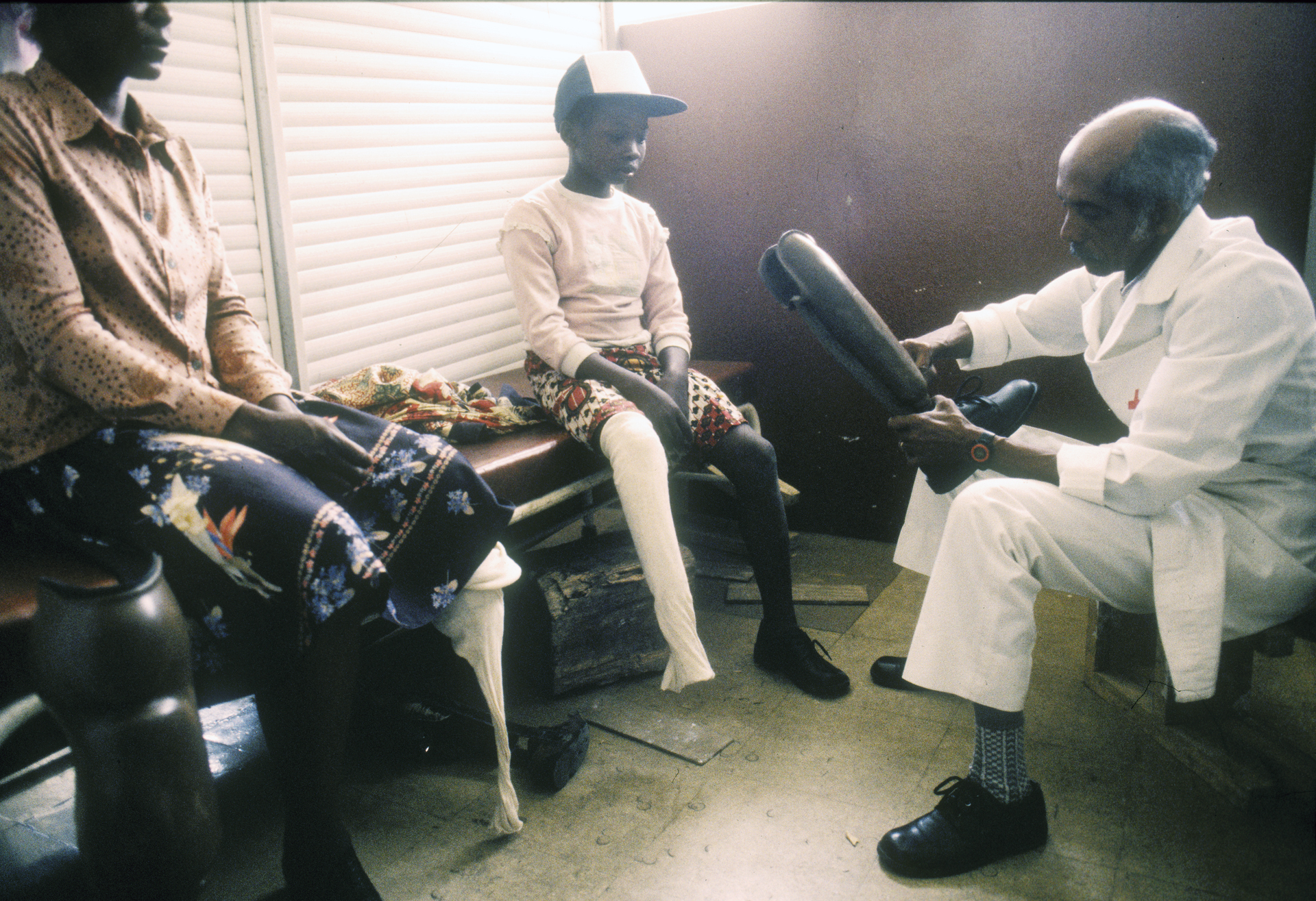Zaida
It is estimated that somewhere in the world 70 people are killed or injured by landmines every day. Most of them are people who have no choice but to go where the landmines are; they must tend their animals, work their fields, carry water, look for firewood. Landmines are mostly hidden in places where there is little distance between war and peace, where poverty and corruption are rampant, where democracy is stumbling.
Designed to cripple and maim more than to kill, landmines cost as little as $3 each to plant, and between $300 and $1000 each to find and destroy. Fifty percent of landmine victims die of hemorrhage, gangrene, infection or tetanus before reaching a hospital. Transportation is often difficult and distances far. Those who make it to hospital survive an average of three agonizing days getting there, account for four percent of all surgical operations, and consume 25 percent of the hospital’s surgical resources. Most landmine victims are civilians; they are poor people, especially women and children.
Zaida is a soft spoken twelve-year-old Mozambican girl with a remarkable memory of eight years ago when she was riding on her mother’s back, going to fetch water, and her mother stepped on what was likely a Russian-made PMN landmine. Life was shattered when five kilograms of foot pressure detonated 240 grams of TNT. The blast that erupted from the earth hurled them into the air, instantly shredding Zaida’s right leg, by macerating tissue and muscle, and firing pieces of bone, clothing, shoe, and debris, deep up into that leg, and the rest of the her tiny body. On the ground, Zaida asked her mother what happened. “She told me we were hurt from a landmine and that if, in a little while, she did not answer when I called to her, it meant she was dead, and that I must get home”, Zaida says, almost in a whisper. She tells me that both of her mother’s legs and one of her arms were gone, and that she soon died. Zaida lay beside her dead mother for three days, before help arrived and she was taken to a Renamo field hospital.
I thought it interesting to note that in Mozambique one of the very first areas given priority for demining was the Coca Cola plant outside Maputo.
-Maputo Hospital, Mozambique 1996
On the outskirts of Kandahar, I watch Gul Ahmad work a strip of land a meter wide with his metal detector. This is when the real magnitude of the landmine problem strikes me, when I’m standing in the middle of a minefield, watching deminers work.
Gul’s metal detector makes a high-pitched squeal. He marks the spot with one of three small blue painted stones he keeps in his pocket. He then measures back “two hands” from that stone, where he places two more stones, about 25 cm apart. He lies flat on his stomach and stretches his hand out from his body, and slowly scrapes dirt away from grass roots with the blade of a bayonet-sized knife. He begins to dig a trench about 4 inches deep and 3 inches wide towards his first stone, – always prodding and scraping at an angle near 30 degrees. Each probe goes deeper, and possibly closer to a landmine. It is cool in Kandahar in February but Gul is sweating. His chest is covered with a thick safety vest, and he wears a hard hat with a shatterproof visor – equipment that could save his life, but would not prevent him from loosing his hands or eyes. His partner sits back about 40 meters watching him, and every 20 minutes they change places.
Gul is one of a team of 24 OMAR deminers working to clear a 42,000 square meter area on the outskirts of Kandahar. They have been working here for 26 days, and are a little more than half finished. So far, they have found 103 anti-personnel mines, 25 unexploded ammunition (mortar and artillery shells), and 47,825 metal fragments, and they expect to be working here 20 more days. Today they have found 8 landmines.
– Kandahar, Afghanistan 1996
